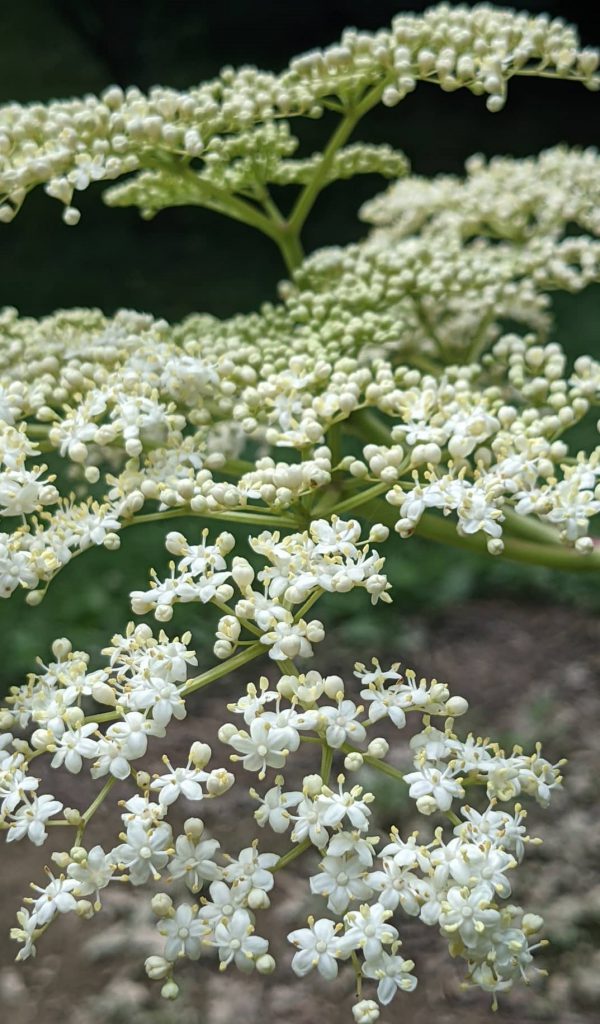Potential Plants to Plant~ Part One of Solving the Greywater Conundrum
Dear Readers…
Banana trees…
Kiwi…
Elderberry…
…and all other fruits and fruit-loving living…things…
As you already know, we have A problem: what to do with all of our kitchen and laundry greywater. In all reality, we have lots of problems. But this problem is the most persistently perplexing and pernicious of all.
Thus far, that is.
Quick overview of the problem: Our mulch basin is currently designed to filter more greywater on a daily basis (about 30 gallons) than our indoor green wall needs in a week (about 20 gallons). For a more in-depth dive into the problem, please read this blog, here.
We spent a considerable amount of time wading through this problematic greywater, and came up with a good bit of potential options to solving the conundrum. You can read the results of that brainstorm, here.
While the resulting options and “maybe-solutions” were bountiful, none were perfect. All of them required some form of re-thinking, re-planning, re-designing…and overall, a reorientation of our previous expectations.
But. Being that we cannot move forward with building this house of ours and having babies until we figure out our greywater problem…we picked an idea. If anything, we shall see where it leads, and maybe an even better solution will evolve from the process.
The solution we have decided to pursue is that of a mudroom/greenhouse addition serving as an ‘absorption field’ for all of our kitchen and laundry effluent. Those who have been paying attention to my Bilbo Baggins infatuation are already well-aware what that mudroom/greenhouse means…but for those who are just jumping in…it means I get to have a hobbit door as our front door!!!! So. Much. Magical. Excitement.
Having a mudroom/greenhouse that is part of our home’s envelope (meaning it has to meet Passive House standards), functions as our absorption field for all of our laundry and kitchen effluent, and is overall expected to be comfortable, quaint, and functional…poses many different design considerations that are going to take a considerable amount of blogs to convey.
This blog is Part One of that endeavor. Eventual we will *hopefully* go on to explain additional means of greywater treatment (we may be ditching the mulch basin for something else…) and the schematics of incorporating the greenhouse into our passive design while simultaneously preventing moisture problems…
But, to begin…we shall start with plants. If plants are going to be doing the job of making our greywater disappear (through absorption, and then evapo-transpiration…in which case our robust ventilation system does that last bit of removing the water vapor from the home…), then we need to know what plants are best suited for the job.
Plant properties to take into consideration:
~The plants we use must be able to grow year-round indoors (this typically means plants more native to tropical regions).
~The plants must be ok with more commonly higher pH and sodium levels found in kitchen and laundry greywater (due to detergents). More acidic soils can be added of course to help maintain a balance.
~ If the plant produces edible fruits, that would be neat! And helpful in the aspect of achieving the Living Building Challenge’s requirement for self-sustaining agriculture on-site.
~ And, of course, the more water-loving the plant is, the better off we will be in getting rid of all of our greywater with little storage needed!!
Without further ado…here are the potential plants to plant in our mudroom/greenhouse! If you have any thoughts of plants to add…or remove…do feel free to mention them!!






Some notes on pH: pH scale ranges from 0-14. 0 to 6 is considered “Acidic.” 6 to 8 is considered “Neutral.” And 8 to 14 is considered “Alkaline.” For example, a lemon has a pH of 2. A typical bar of soap has a pH of 12. Greywater typically has a higher pH (more alkaline than acidic) and high sodium (from dishwasher and laundry detergents…).
List of links to generally good greywater resources:
https://greywateraction.org/greywater-choosing-plants-and-irrigating/
https://www.doh.wa.gov/CommunityandEnvironment/WastewaterManagement/GreywaterReuse
https://www.thegreywaterguide.com/greywater-for-the-garden.html/
~
Thanks for reading! And feel free to try out those plants in your own greywater garden…and then do please let me know how it goes… 😉
Shelby Aldrich
2 Comments
Submit a Comment
© 2020 Sustaining Tree
© 2020 Sustaining Tree


I like that the palm needs lots of water, but it
seems that the Rosemary is going to need looked after a bit more.
Hey Aunt Rose! 🙂 Yes, the Rosemary may have a hard time with all of our other more “water intense” plants. I love that it is recommended to be irrigated with greywater and that it does well with high salt content…but I also don’t want it to drown! I’m wondering if there is a way I can plant it in its own bed with its own level of weekly irrigation, but still in a way that it can help with the salt levels of the greywater for the other plants? So many plant ponderings…
Thank you for reading!!! 🙂 <3